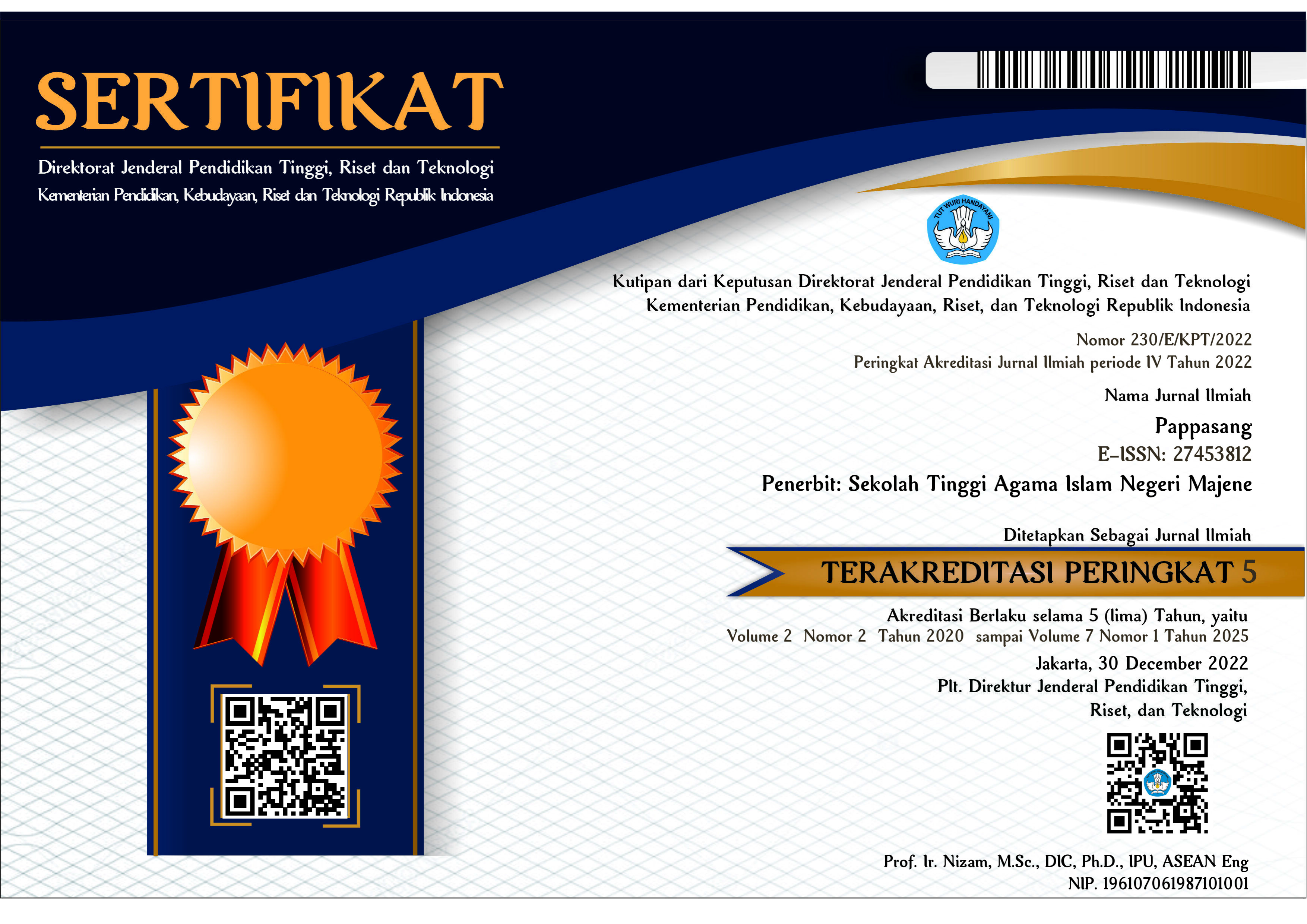Publication Ethics
Pappasang Journal is a peer-reviewed journal. The journal follows the guidelines of the Committee on Publication Ethics (COPE) which deals with all aspects of publication ethics and, in particular, how to handle cases of research and publication infringement. This statement clarifies the ethical behavior of all parties involved in the act of publishing articles in this journal, including the authors, Editor-in-Chief, Editorial Board, peer-reviewers and publishers (Prodi Ilmu al-Qur'an dan Tafsir Sekolah Tinggi Agama Islam Negeri Majene). The journal is dedicated to following best practice on ethical issues, wrongdoing and revocation. Prevention of publication malpractice is one of the important responsibilities of the editorial board. Any form of unethical behavior is unacceptable, and the journal does not tolerate plagiarism of any kind.
Pappasang Journal adapts COPE to meet high-quality ethical standards for publishers, editors, authors and reviewers. As an important issue, publication ethics needs to be clearly defined in order to improve the quality of research worldwide. In this section, we describe the standards for editors, writers, and reviewers. The publisher has no right to interfere with the integrity of the content and only supports publishing in a timely manner.
For Editors
1. Based on the review report from the editorial review board, the editor may accept, reject, or request modifications to the manuscript.
2. The editor must be responsible for every article published in the Pappasang Journal
Editors can communicate with other editors or reviewers in making a final decision.
3. An editor must evaluate manuscripts objectively for publication, judging each on its quality regardless of the author's nationality, ethnicity, political beliefs, race, religion, gender, seniority, or institutional affiliation. He must refuse his duties when there is a potential conflict of interest.
4. Editors need to ensure that documents sent to reviewers do not contain author information, and vice versa. The editor's decision must be informed to the author along with the reviewer's comments unless they contain offensive or defamatory comments.
5. Editors must respect requests from authors that an individual should not review submissions, if this is reasonable and practicable.
6. Editors and all staff must ensure the confidentiality of submitted manuscripts.
7. Editors will be guided by the COPE flowchart if any alleged misconduct or authorship is disputed.
For Reviewers
1. Reviewers need to comment on ethical questions and possible research and publication violations.
2. Reviewers will do the work on time and must notify editors if they are unable to complete the work.
3. Reviewers need to keep manuscripts confidential.
4. Reviewers should not accept to review manuscripts where there is a potential conflict of interest between them and any authors.
For Authors
1. The author confirms that the material has not been previously published and that they have not transferred any rights to the article.
2. Authors must ensure the authenticity of the work and that they have properly cited other people's works according to the reference format.
3. The author must not engage in plagiarism or self-plagiarism.
Authors should ensure that they follow the authorship criteria taken from Pappasang described in the instructions for authors of the Pappasang Journal.
4. Authors may not submit the same manuscript to more than one journal at the same time. It is also hoped that the authors will not publish redundant manuscripts or manuscripts describing the same research in more than one journal.
5. Authorship should be limited to those who have made a significant contribution to the conception, design, conduct or interpretation of the research reported. Others who have made significant contributions must be listed as co-authors. The author also ensures that all authors have seen and approved the submitted version of the manuscript and the inclusion of their names as co-authors.
6. The author does not suggest any personal information that can make the patient's identity identifiable in any form of description, photographs or genealogy sections.
7. The author must provide the editor with data and work details, if there is any suspicion of falsification or falsification of data. If at any time, the author finds significant errors or inaccuracies in the submitted manuscript, the errors or inaccuracies must be reported to the editor.
8. Journal authors must clarify anything that could cause a conflict of interest such as employment, research fees, consultant fees, and intellectual property in Pappasang documents.
9. The author is required to sign a statement that the article is free from plagiarism, please download it at the following link.










